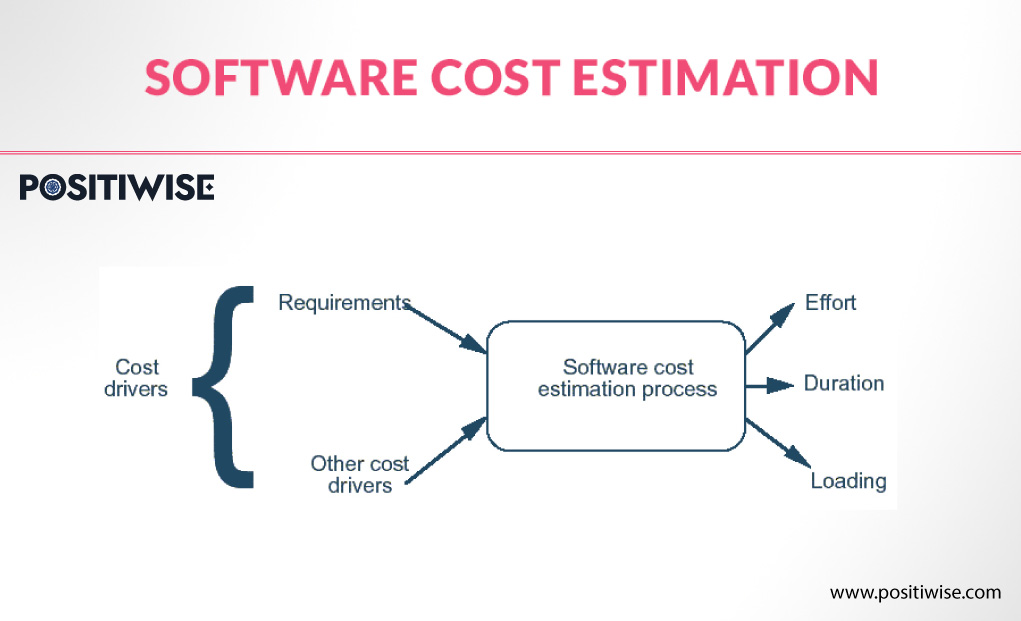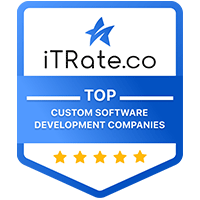Quick Overview:
Small- to large-scale organizations adopt highly advanced software to boost productivity and revenue. Most companies prefer to develop their custom software solution rather than opting for third-party software, as it ensures they fulfill their business requirements and provides them better control over its functioning. Before initiating any custom software development project, development teams analyze several aspects, and one of them is conducting a feasibility study.
The cost of software development is the most vital focus whenever a company or enterprise business wants to go for any technical modernization. Therefore, the project only begins after finalizing the software development costs, assuming that it covers all resources, including post-development maintenance and support.
The integration of Cloud infrastructure, Artificial Intelligence, Machine Learning, the Internet of Things, Blockchain, and much more has led to the software development team putting in increased effort, which directly impacts the expansion of the payable accounts.
It is hard to get a final software design and development cost by knowing the business demands. The cost of subscriptions to development platforms and access to improved technologies is changing dynamically. But, you can get an approximate price figure by looking at and studying some of the primary constituents involved in the viability study.
Custom Software Development Cost: Key Factor to Analyze for Estimation
You can find the proper expenditure of software projects by scrutinizing the vital components below. A software product development company includes these in every calculation when generating the documents associated with software cost estimation.
- Type of Project
- The Complexity of Software Project
- Size of Software App Development Team
- Development Approach
- Insourcing or Outsourcing
1. Type of Project
The first step in defining cost is understanding the project details and scope. Sometimes, enterprises only need a login page or a new user-friendly interface, not full-fledged software. One must carefully review the requirements to determine whether a custom software application is necessary or whether cost savings can be achieved by modernizing the current application.
In addition, details of devices and operating systems used by end-users are essential for deciding the platform and programming language for fabricating a scalable software solution. Creating a cross-platform web application and picking different technologies for multi-device compatibility will raise software development prices.
To determine the cost of software development, it is crucial to recognize the type of software required, such as a website, desktop solution, mobile application, or web app. Moreover, you must research what software type will best suit your enterprise and user base.
2. The Complexity of Software Project
The smooth functioning of the software depends on the interaction between the front and back end. Building a well-grounded base for any application is the primary pillar, assuring performance and Quality of Service. The complexity of software also rests on the number of customized APIs, widgets, and plugins required to craft it within schedule.
Furthermore, software design requirements, adjoining systems, and networks escalate the convolution of an application, for which more assets, time, and budget are needed. Giving an appealing look with animations, gradients, and streaming videos intensifies the cost of software creation. Still, you can ensure a high return on investment with this, as it will retain your potential customers and enhance visitor conversion.
Moving to the backend, embedding cloud and third-party APIs is expensive, but its charges are entirely subject to the number of users, configured security mechanisms, servers, and resource utilization. Therefore, complexity relies on your necessities. You can effectively control this by going for a simple, attractive design and a streamlined backend, which you can slowly scale up with a growing business.
3. Size of Software App Development Team
Total members of a software developer team are hired according to the software project’s type, complexity, features, and timeline. Different roles employ QA analysts, project managers, developers, designers, testers, and cloud and network architects with different base pay. Somewhere in software development, the signing up of employees also depends upon the platform selected to build the application.
For Example, suppose you have selected custom .NET application development. In that case, you only need to hire a dedicated software developer, but if you choose different technologies, you will require a software application development team with the appropriate skill set.
With more demands and a tight schedule, human resources, hardware, and software assets are doubled. Therefore, you must cross-verify a team member’s skills with the complexity of your project and try to create cases where a single person can fulfill more than one role. Such techniques are beneficial in small and medium projects, where developers can design software interfaces and backends and test them on their behalf. But, for large-scale projects, a single resource needs to concentrate on a dedicated portion to move precisely with the project plan.
Therefore, a few hired hands can save you money in small and medium-scale projects, but it can vary as per your time to market and enterprise necessities.
4. Development Approach
Every software development company follows a diversified methodology to cover all your business needs and construct a powerful, future-oriented application. Each approach consists of gathering information, design, development, testing, and software deployment.
However, agile is the most popular and preferred development mechanism, which works on executing small iterations to cover each business aspect. It aids in reviewing the progress after each iterative session and enables the clients to add modifications in between. You can highly benefit from this approach, but deciding on a fixed budget to create your software is impossible, as new resources will be added, impacting the timeline to extend with every new necessity.
Moreover, several other software development pricing models and techniques are available, and you can easily select a suitable one by scrutinizing the complexity, type, and tech stack you will use. This can optimize the overall cost and save you some hundred grand.
5. Insourcing or Outsourcing
In-house teams and joining forces with an IT company are the two most appreciated ways, and both have advantages and disadvantages. You have to select the most relevant option according to your organizational prerequisites. You can engage full-time employees on a salary basis and assign them to multiple ongoing projects in your enterprise. It will lead you to construct and maintain your multiple custom software affordably.
With an outsourcing approach, the burden can be reduced, and you can choose from engagement models offered by the other company. In addition, it helps to avail efficient services at a low cost and promises to roll out the solution before the deadline.
In addition to this, consider implementing hybrid models where the company signs NDA agreements and divides the project between in-house and outsourced teams. For Example, a partner company will create the solution, but your full-time employees will modernize and maintain it. It can cause a significant benefit in reducing the cost and conserving the standards.
How to Determine the Cost of Software Development?
Accurate estimation is key to software project success. Refine the process through experience and learning.
Here are some tips for estimating software development costs:
- Break down the project into distinct features and components. Estimate each piece separately.
- Account for one-time costs like initial architecture, design, prototyping, etc.
- Estimate efforts for coding individual components based on their complexity. Use past experience or industry averages for similar work.
- Include time for testing, debugging, documentation, and other ancillary activities.
- Account for project management, meetings, communications, etc. These can take 15-20% of total efforts.
- Consider costs for licensing, infrastructure, operations, maintenance, etc.
- Factor in costs for any specialized skills needed – e.g. machine learning, security.
- Keep a contingency buffer of 15-20% to account for unknowns and changes.
- Understand team composition clearly – experience levels, billing rates, etc.
- Use function point or story point estimation approaches for larger projects.
- Build prototypes or POCs to estimate complex or unfamiliar work better.
- Regularly track actual time against estimates and refine your process.
- Use third-party estimation tools or services if available. But rely mainly on your own expertise.
- Take feedback from multiple experienced people to come up with consensus estimates.
What to do after Identifying Key Facets?
- After listing all the essential information, such as whether you need to build a web or desktop app and its core functionalities, you must identify the most suitable platform to furnish it. Moreover, we need to pin down all professional human resources and document their wages before proceeding.
- You can go for project management tools, such as Microsoft Project, to produce a work breakdown structure and a Gantt Chart for better insight into the total requirement of assets, people, and finances. It can also keep up the momentum for completing upcoming milestones adequately. In addition, you can use this tool to calculate the overall time and cost needed to finalize and deploy the product in the market.
- And, if you are going to collaborate with a third party, you can request an RFP and conduct a consultation session to aid yourself with a temporary expenditure structure and services concluded in it. Then, check with different vendors and assess which one offers the best custom software development economically.
- At this stage, when you are involved in preserving capital and adapting a digital solution, your decision-making is greatly assisted by Chatsonic. So keep an eye on the mentioned elements and explore the market to gain a high return on your investment in a short period. Besides this, always have a variable of +/- 10 – 15% of the overall software development budget, as new challenges can appear during development.
Accelerate Your Business with Custom Software Solutions
Struggling with outdated or ineffective software? Our expert team provides custom systems designed specifically for your business needs. We analyze your operations, build solutions to fit your workflow and integrate with existing infrastructure.
Some Important FAQs on the Cost of Software Development
Q1: What factors affect the cost of custom software development?
The main factors are the project scope, features, complexity, team size, developer rates, tools and technologies used, integration needs, quality standards, testing requirements, infrastructure costs, and post-launch support needs.
Q2: Does location impact software development cost?
Yes, developer salaries and rates vary significantly based on location. Developing in regions with lower costs, like India or Eastern Europe, can reduce overall project expenditure.
Q3: How can I estimate the cost of my software project?
Start by creating a detailed requirements document. Break down features into components and get estimates on a modular level. Add up costs for developers, QA, project management, infrastructure, licenses, etc. Buffer an extra 10-20% for contingencies.
Q4: Should I hire full-time developers or outsource?
Outsourcing gives you access to specialized experts for lower costs. Hiring in-house developers adds payroll and infrastructure overheads but builds long-term capability. Choose based on strategic needs.
Q5: What is the average hourly rate for software developers?
The global average is around $40-50 per hour, ranging from $10-15/hr for beginners to $150/hr+ for highly specialized senior developers. Rates vary by skills, experience, and location.
Q6: How much does complex enterprise software cost?
Large enterprise systems with extensive features typically cost between $100K to $500K+ depending on requirements. Highly complex projects are usually over $1 million.
Q7: Can I reduce my software development costs?
Yes, by carefully scoping requirements, prototyping, reusing existing components, choosing affordable tools, testing efficiently, optimizing processes, using fixed-price models, and avoiding unnecessary features or scope creep.
Conclusion
Estimating the cost of a custom software project is not as difficult as most people assume. First, you need to write down the vital information, as mentioned in this blog, and then you can quickly know the ballpark value of the software development budget you need.
After calculating the finances and ensuring they align with your company accounts, you can easily proceed to establish a brand across digital platforms. Always pick out a reliable partner, such as Positiwise, who holds you from the beginning and long-last with your organization.
Expert in Marketing Strategy and Brand Recognition
Jemin Desai is Chief Marketing Officer at Positiwise Software Pvt Ltd, he is responsible for creating and accelerating the company’s marketing strategy and brand recognition across the globe. He has more than 20 years of experience in senior marketing roles at the Inc. 5000 Fastest-Growing Private Companies.






